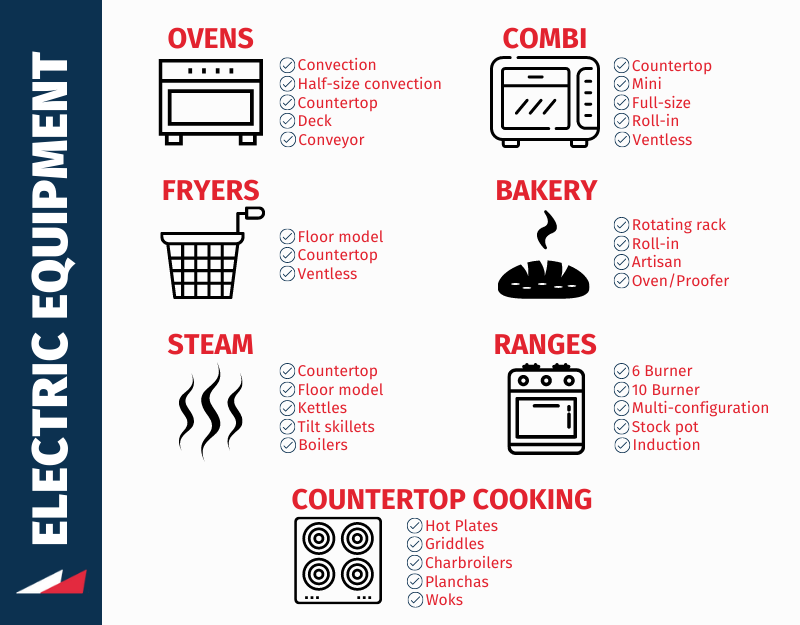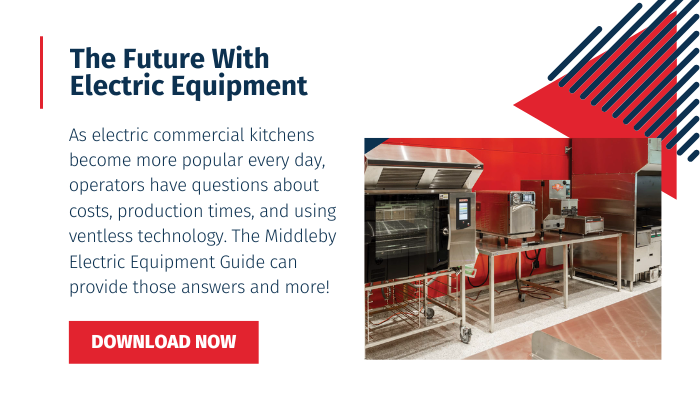Three Myths Debunked About Commercial Electric Foodservice Equipment

One of the biggest decisions for foodservice operators when building a commercial kitchen is the choice between gas or electric cooking equipment. For years, using gas was considered the best option for many reasons, including temperature control and the overall cost of the equipment. Now, as electric commercial kitchen equipment and local usage regulations have evolved, the gas vs. electric stove debate points are narrowing.
Let’s look at three myths about electric foodservice equipment. By debunking these common misconceptions, we can help prove using an electric range, griddle, boiler, fryer, or ventless hood are excellent options for foodservice businesses.
Myth #1 – Cooking with Electricity Is Less Precise than Cooking with Gas
Traditionally, chefs have been trained to think that commercial gas ranges are more precise than commercial electric ranges. Using the flame to control temperature makes gas equipment seem more accurate, or at least that’s what the perception is. In reality, today’s innovations in electric ranges provide multiple ways to adjust heat, controlling it at levels that are just as precise or even more accurate than gas. Many use touch screens to control temperatures to the exact degree, and even with methods and equipment like woks where flames are synonymous with the cooking method, there are electric options available to today’s operators.
Myth #2 – Electric Equipment Takes Longer to Heat Up
When using gas, a flame immediately appears indicating heat. That visual isn’t quite as readily available when using electricity to cook. That doesn’t mean commercial electric equipment is taking longer to heat up, though. In fact, the opposite can be true. When comparing the usage of an electric vs. gas oven, an electric oven can hold more heat than gas, meaning better heat retention. And when you factor in the concept of induction cooking, which can only be powered by electricity, the heat source is almost instantaneous. It takes less time to boil water, for example, which can help operators produce many menu items faster than cooking on a gas unit.
Myth #3 – There Aren’t Many Electric Options Available
Years ago, when gas foodservice equipment was king, there weren’t many electric options available. In today’s market, though, that has significantly changed.

With options for electric ranges, fryers, griddles, broilers, and even pizza ovens, entire kitchens can be set up using strictly electricity to run the equipment. It’s even possible to run a fully ventless commercial kitchen to produce foods that even a few years ago were never imaginable using electric equipment. Ventless electric equipment provides the ability to cook anywhere there’s an outlet, and it opens up multiple options for restaurants, stadiums, universities, and event venues.
Discover how Middleby brands can help transform your commercial kitchen using electric foodservice equipment.
References:
Topics
- Restaurants (93)
- Foodservice Industry Trends (57)
- Beverage (41)
- Ventless (37)
- Automation (30)
- See All Topics

